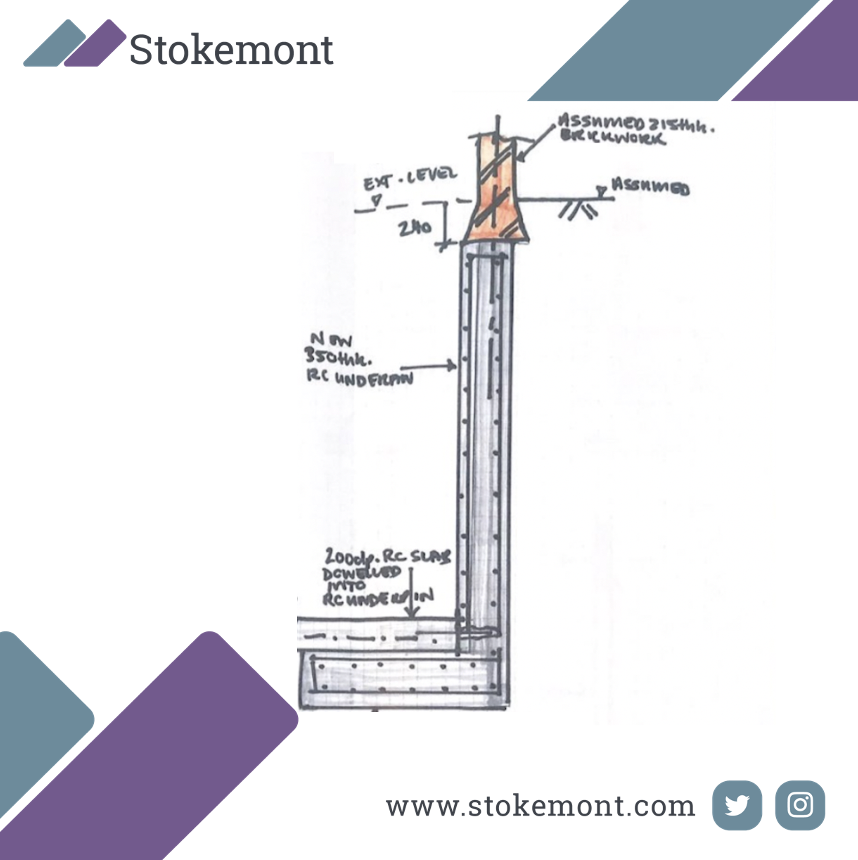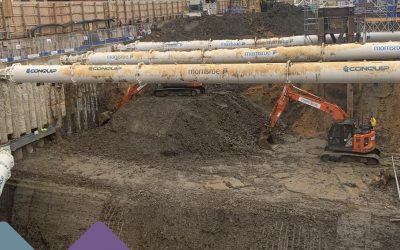In today’s Property Surveying blog post topic we are going to be taking an in-depth look at one of the more specific and unknown areas of the Party Wall etc. Act 1996.
Special foundations come into play when a building owner is undertaking deep excavations and in order to facilitate their works will be underpinning the party wall.
In order for the structure above the party wall to be structurally sound, if a building owner plans on undertaking deep excavations alongside the party wall, commonly facilitating a basement extension or conversion. Under the Party Wall etc. Act 1996 and as per Building Regulation requirements they are going to need to underpin the party wall itself.
Commonly, underpinning is also referred to as strengthening or safeguarding the party wall and is the process of digging beneath the party wall’s corbel fitting and then installing a new concrete foundation which often forms the outer flank of the new subterranean basement room.
It is not uncommon for Party Wall Notices to have wording referring to a special foundation.
One of the most common questions we find ourselves asked here at Stokemont is what is a special foundation? Under the Party Wall etc. Act 1996 and in particular Section 20, a special foundation is defined as:
“special foundations” means foundations in which an assemblage of beams or rods is employed for the purpose of distributing any load
This effectively means that any foundation with any form of reinforced concrete, metal dowels, bracing or insertions, is considered to be “special” under the Party Wall etc. Act 1996.
It is also a requirement of the Party Wall etc. Act 1996 for the building owner to obtain the adjoining owner’s express consent for the installation of these types of foundations.
The logic behind needing this consent is actually quite archaic, however, very briefly dates back to when special foundations were a significant assemblage of rods and beams, often to accommodate larger multi-storey structures more akin to commercial property.
However, over the years legal interpretation has seen the special foundations consent and definitions spread to the Party Wall etc. Act 1996.
The logic behind the consent is that in theory adding the metal and reinforcement to the concrete would make it significantly more difficult and costly for an adjoining owner to ever attempt to cut away or remove the metal elements of the foundation.
For this reason the Party Wall etc. Act 1996 requires a building owner to get their express consent.
Here at Stokemont, taking a look at this from a practical standpoint, we are of the opinion that special foundations are a very credible and sound solution for underpinning and especially basement conversions.
The introduction of metal into the foundation ensures that the foundation’s profile is not only significantly narrower, however the end result is significantly stronger than a thicker concrete only foundation. While also being a lot more time-effective to actually install on site.
The alternative to special foundations is the installation of mass concrete foundations.
Unlike special foundations, mass concrete foundations will not have any metal reinforcement installed within them. In practice, this effectively means that the overall width of the foundation is significantly thicker, which can often mean that the overall basement square footage is reduced.
It is also worth noting that mass concrete foundations are going to require more concrete during their installation, while also taking longer to construct on site, as there is additional concrete to cure and additional excavations to undertake.
Our take on special foundations versus mass concrete is that special foundations are far and wide the better solution.
Its effectively residential construction techniques catch up with commercial construction techniques and one sector learning from the other.
Our standard off the shelf advice to any adjoining owner would be to consent to the installation of special foundations.
In consenting, you are not only ensuring that the risk to your structure is reduced, by way of the construction taking less time while also being restricted.
However, you are also ensuring that if you plan on undertaking a similar basement extension in the future, you are likewise going to gain the benefit of added floor space and square footage, as effectively you will have that narrower stronger foundation in place.
Special foundations are a complex part of the Party Wall etc. Act 1996 and there are significant amounts of different opinions amongst the profession and party wall surveyors.
We believe our take on special foundations to be a “common sense” approach, befitting of the facilitating spirit of the Party Wall etc. Act 1996.
If you would like to discuss basement excavations, or special foundations, with our team of RICS (Royal Institute of Chartered Surveyors) party wall surveyors, please feel free to give us a call today and we will be more than happy to assist and to advise you.




